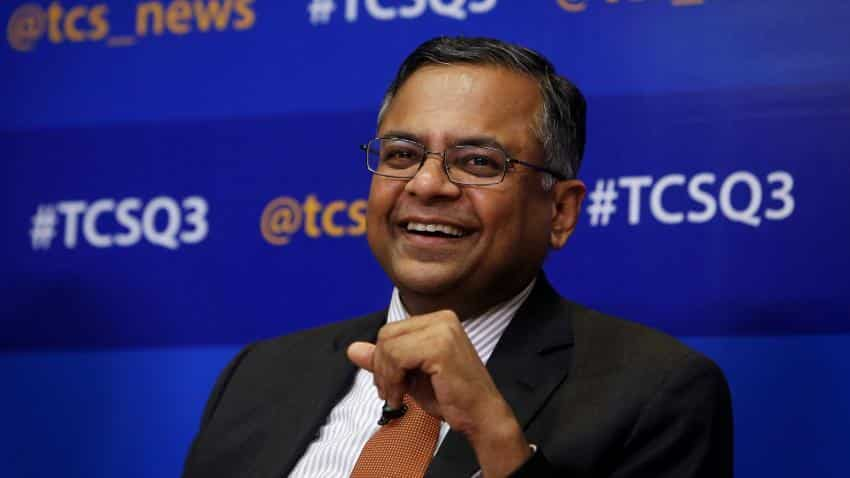Turning around Tata Motors domestic biz need of the hour: Chandrasekaran
Addressing shareholders in the company's Annual Report 2016-17, he said Tata Motors' standalone net revenues increased by 3.7%to Rs 44,777 crore for the 12 months ended March 31, 2017 but standalone loss before tax for the year fell to Rs 2,421 crore, compared with Rs 67 crore in the prior year.

Tata Motors Chairman N Chandrasekaran has said turning around domestic business of the company is "the need of the hour" as it has suffered from delays in new product launches, lack of adequate response to competition and an unsustainable cost structure.
Addressing shareholders in the company's Annual Report 2016-17, he said Tata Motors' standalone net revenues increased by 3.7%to Rs 44,777 crore for the 12 months ended March 31, 2017 but standalone loss before tax for the year fell to Rs 2,421 crore, compared with Rs 67 crore in the prior year.
"In the domestic business segment, business turnaround is the need of the hour and management is working with renewed focus and energy to improve our market share, reduce our cost base, streamline the supply chain and ensure launch of products on time to delight our customers," he said.
The company's market share in commercial vehicles (CV) segment has fallen to 44.4%from a high of 59.4%in FY2011-12, while market share for passenger vehicles (PV) declined to 5.2%from 13.1%in the same period, he added.
"Overall, delays in new product launches as well as lack of adequate responsiveness to the competitive environment and an unsustainable cost structure have contributed to this performance," Chandrasekaran said.
Consolidated net revenues declined by 1.2%to Rs 2,69,850 crore for the 12 months ended March 31, 2017 and consolidated profit before tax for the year fell sharply to Rs 9,315 crore, compared with Rs 14,126 crore in the prior year, he added.
Chandrasekaran, however, expressed confidence that a series of actions taken by the management team would succeed and show an improved performance in both the commercial vehicle and passenger vehicle segments in India and deliver better financial results.
Expressing similar views, Tata Motors Managing Director Guenter Butschek said: "Our immediate priority now is on execution - to address the top concerns of supply constraints, to advance the launch time of some of our new products."
He further said: "In full alignment with the board, we have finalised a business turnaround plan through which we take upon ourselves to deliver a robust bottom-line improvement in FY17/18."
Butschek said one of the most important initiatives in 2016-17 was the Organisational Effectiveness (OE) exercise, with the objective of bringing "the much needed empowerment and accountability within the business unit, strong functional oversight based on the key principles of speed, simplicity and agility".
"Due to its magnitude and complexity, the transition of the new management structure w.E.F. From April 1, 2017 faced some challenges, which in the meanwhile is getting addressed on a case to case basis," he added.
While challenges such as demonetisation and transition to BS IV affected business, Butschek also admitted that Tata Motors did not adequately react to the changing environment.
Due to the unexpected and unprecedented changes in the market, he said, "we faced a rather hostile business cycle with headwinds in the form of demonetisation, the famous Supreme Court ruling on BS4 transition."
As a matter of fact, Butschek further said, "it was not only the market volatility which affected our performance, but mainly our sluggishness in reading the market in time, as we were effectively late to respond."
Tata Motors' ImpACT (Improvement by Action) projects with full time senior leaders and dedicated teams having ownership at executive committee level helped the company focus on four areas intense top-line focus, cost optimisation, customer centricity and structural improvements in processes, he said.
"These projects have started to payback and have created a great change of momentum in the entire organisation. We have built a very strong savings potential with positive effects in FY17/18 and the years to come," Butschek said.
Get Latest Business News, Stock Market Updates and Videos; Check your tax outgo through Income Tax Calculator and save money through our Personal Finance coverage. Check Business Breaking News Live on Zee Business Twitter and Facebook. Subscribe on YouTube.
10:31 AM IST











 Tata Motors announces price hike on trucks and buses; shares under pressure
Tata Motors announces price hike on trucks and buses; shares under pressure Tata Motors to hike commercial vehicle prices by up to 2% from January 2025
Tata Motors to hike commercial vehicle prices by up to 2% from January 2025 Tata Motors showcases advanced technology at BaumaConexpo 2024
Tata Motors showcases advanced technology at BaumaConexpo 2024 Tata Motors shares rise over 1% as company announces third price hike in 2024
Tata Motors shares rise over 1% as company announces third price hike in 2024 Tata Motor to raise passenger vehicle prices by up to 4% from January 2025
Tata Motor to raise passenger vehicle prices by up to 4% from January 2025